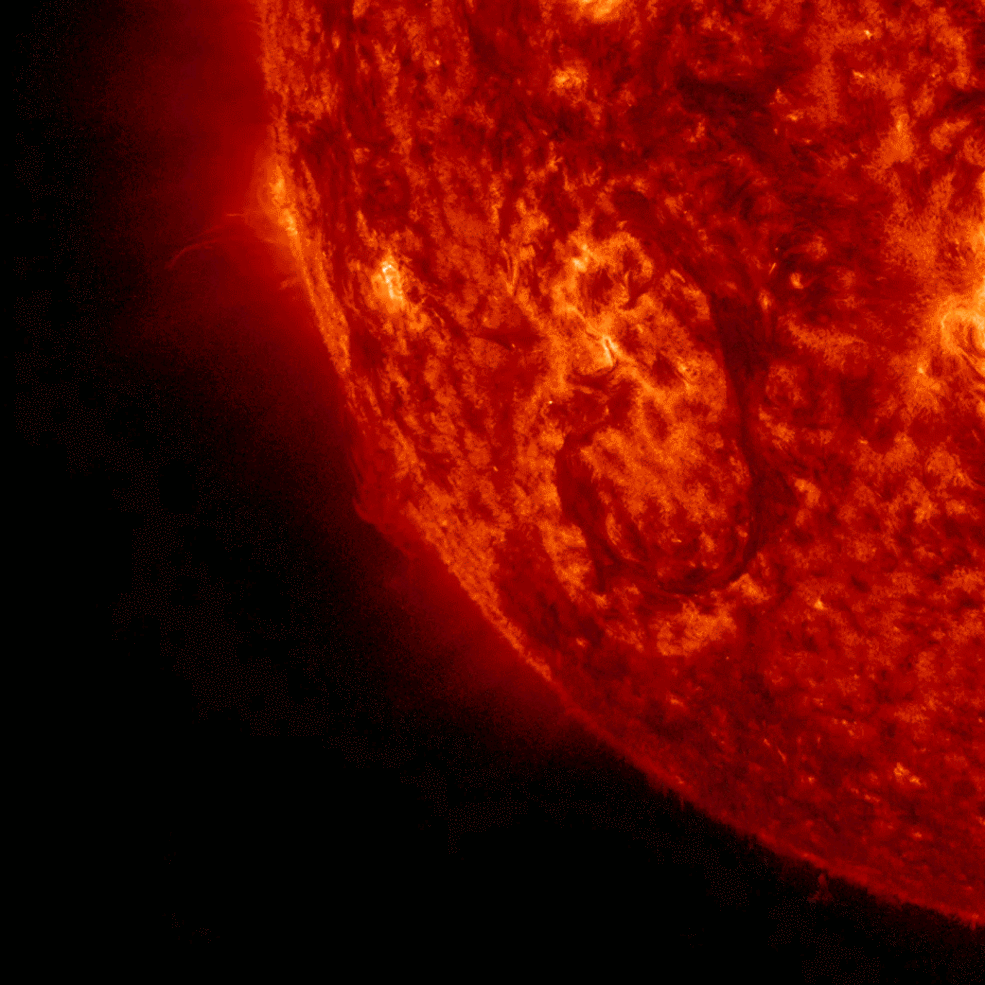
Enjoy science and the beauty of the cosmos? Please donate to help EarthSky keep going.
Rather donate via PayPal or send a check? Click here.
Storms on the sun can cause regions of excessive electrical charge in the upper atmosphere above Earth’s poles. New research finds that they can also do the exact opposite: deplete regions of the atmosphere of electrically charged particles. Both of the things, say the researchers, can possibly cause radio communications to fail, reduce the accuracy of GPS systems, damage satellites and harm electrical grids.
Solar storms often include an eruption on the sun called a coronal mass ejection, or CME – a vast cloud of electrically charged particles hurled into space. When these particles encounter Earth’s magnetic field, NASA explained,
…they interact in a series of complex physical processes, and trigger perturbations in the Earth’s magnetic field, called geomagnetic storms. The interactions can cause unstable patches of excess electrons in the ionosphere, an atmospheric region starting about 50 miles (80 kilometers) above Earth’s surface that already contains ions and electrons.
An international team of researchers made the discovery about the opposite effect – the depletion of electrons – while studying a solar storm that reached Earth on February 19, 2014. The storm was a result of two powerful Earth-directed CMEs and affected the ionosphere in all of Earth’s northern latitudes.
The storm initially produced patches of extra electrons in the ionosphere over northern Greenland. But just south of these patches, the scientists were surprised to find broad areas extending 300 to 600 miles (500 to 1,000 kilometers) where the electrons were “almost vacuumed out,” according to researcher Per Hoeg of the National Space Research Institute at the Technical University of Denmark. These areas remained depleted of electrons for several days.
Researcher Attila Komjathy of NASA’s Jet Propulsion Laboratory, said in a statement:
We don’t know exactly what causes the depletion. One possible explanation is that electrons are recombining with positively charged ions until there are no excess electrons. There could also be redistribution – electrons being displaced and pushed away from the region, not only horizontally but vertically.
The electrons in Earth’s ionosphere normally reflect radio waves back to ground level, enabling long-distance radio communications. That why, say the researchers, both electron depletion and electron increases in this layer can possibly cause failure in radio communications, GPS systems, as well as damage satellites and harm electrical grids.
The research was published January 25, 2017 in the journal Radio Science.
Bottom line: New research suggests that solar storms can not only create excessive electrical charge in Earth’s upper atmosphere, but also do the exact opposite – disrupting communications either way.
Enjoy science and the beauty of the cosmos? Please donate to help EarthSky keep going.











